Racial Attention Deficit
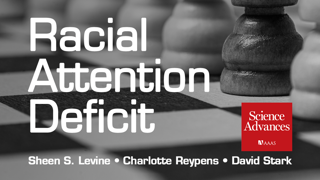 Racial minorities bring novel perspectives to the organizations in which they work. But what if White Americans are not paying attention to their Black colleagues? In an experiment involving 2,500 White working-age Americans, we show that Whites are less likely to follow the choices and learn from their Black peers. We further propose and test several measures to mitigate this racial attention deficit.
Racial minorities bring novel perspectives to the organizations in which they work. But what if White Americans are not paying attention to their Black colleagues? In an experiment involving 2,500 White working-age Americans, we show that Whites are less likely to follow the choices and learn from their Black peers. We further propose and test several measures to mitigate this racial attention deficit.
“Racial Attention Deficit.”
Moments of Identity
 Ziggy Stardust, Bob Dylan, Deadmou5: What is the relationship between artistic personas, the artists that bear their names, and the audience? In this paper we study persona as a part that stands apart, an object that others can recognize and by which the artist can be recognized. Yet, all the while, what is recognized defies the artist’s complete control. Variously and independently attached to artist and audience, persona fuels a three-way dynamics of identity similar to what we observe everyday with online profiles.
Ziggy Stardust, Bob Dylan, Deadmou5: What is the relationship between artistic personas, the artists that bear their names, and the audience? In this paper we study persona as a part that stands apart, an object that others can recognize and by which the artist can be recognized. Yet, all the while, what is recognized defies the artist’s complete control. Variously and independently attached to artist and audience, persona fuels a three-way dynamics of identity similar to what we observe everyday with online profiles.
“Moments of Identity: The Dynamics of Artist, Persona, and Audience in Electronic Music.”
In press.
Style Typologies and Competitive Advantage
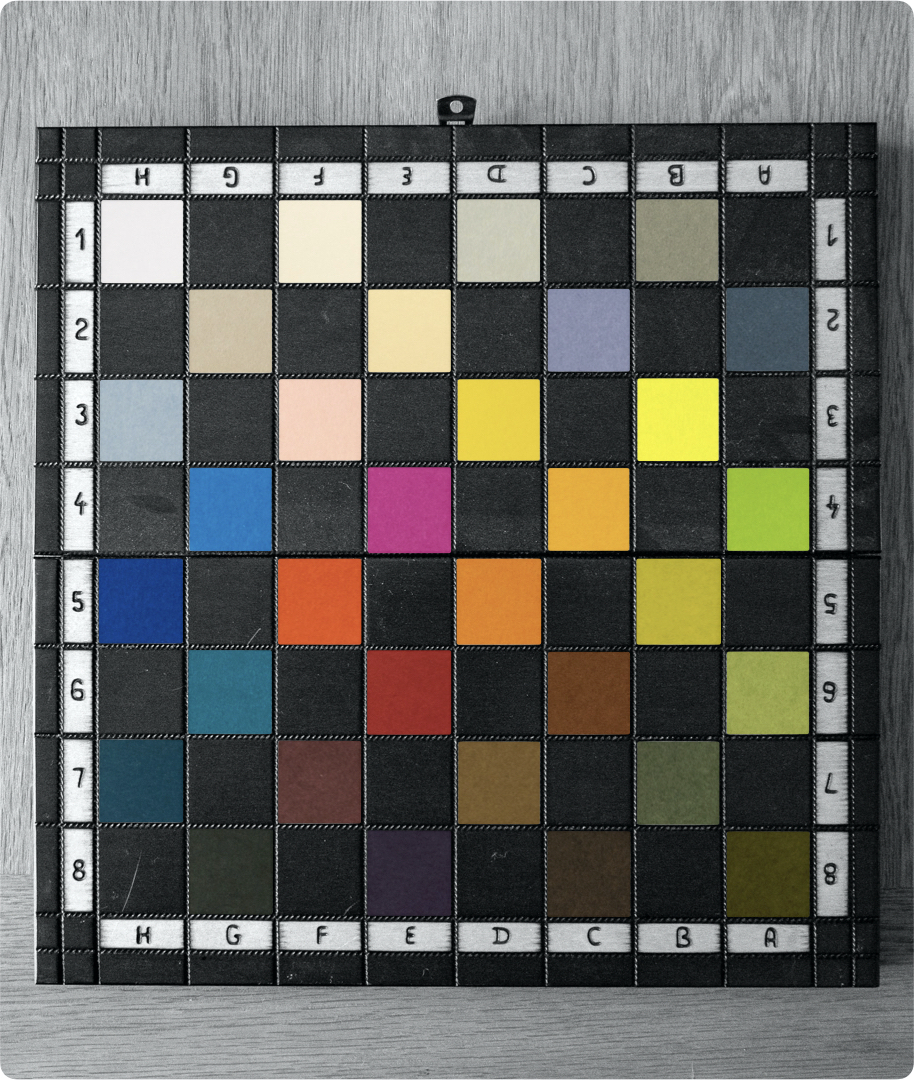 Are creative and cultural fields governed by a dominant aesthetic narrative? And how do eclectic creators use aesthetic elements to communicate their identity in a compelling and unified way? In this paper, I introduce the notion of style typologies as recurrent combinations of aesthetic elements that serve a normative and semiotic function within and across contexts. Using a novel methodology to manipulate color information, I analyze the music and color palette of electronic music artists and show how style can transform varied and potentially confounding traits into a distinctive competitive advantage.
Are creative and cultural fields governed by a dominant aesthetic narrative? And how do eclectic creators use aesthetic elements to communicate their identity in a compelling and unified way? In this paper, I introduce the notion of style typologies as recurrent combinations of aesthetic elements that serve a normative and semiotic function within and across contexts. Using a novel methodology to manipulate color information, I analyze the music and color palette of electronic music artists and show how style can transform varied and potentially confounding traits into a distinctive competitive advantage.
Style Typologies and Competitive Advantage
Algorithmic Management in the Platform Economy
 The platform model is a new organizational form distinct from markets, hierarchies and networks. This papers shows how platforms co-opt the behavior of providers and users through non-bureaucratic rules, ratings translated into rankings, and twisted feedback loops that deflect accountability. It relates power asymmetries at the organizational level to coalitions at the regulatory level.
The platform model is a new organizational form distinct from markets, hierarchies and networks. This papers shows how platforms co-opt the behavior of providers and users through non-bureaucratic rules, ratings translated into rankings, and twisted feedback loops that deflect accountability. It relates power asymmetries at the organizational level to coalitions at the regulatory level.
Thematic Issue: Power and Control in Platform Monopoly Capitalism
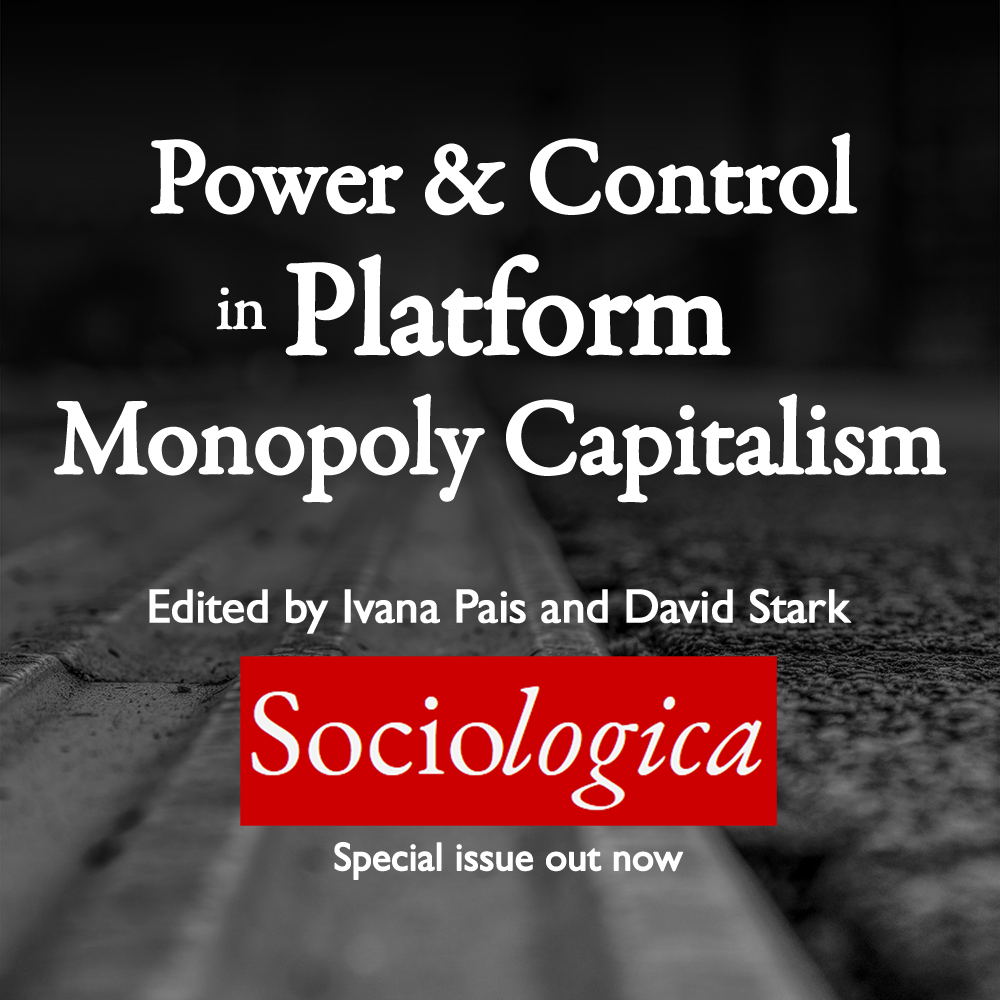 This thematic Issue of Sociologica is devoted to research on the distinguishing organizational form of the 21st century – the platform model. Focusing on issues of power and control, contributors include: Koray Caliskan, Koen Frenken, Gernot Grabher, Martin Kenney, Ivana Pais, Jamie Peck, Juliet Schor, David Stark, Janet Vertesi, Elizabeth Watkins, and their various co-authors.
This thematic Issue of Sociologica is devoted to research on the distinguishing organizational form of the 21st century – the platform model. Focusing on issues of power and control, contributors include: Koray Caliskan, Koen Frenken, Gernot Grabher, Martin Kenney, Ivana Pais, Jamie Peck, Juliet Schor, David Stark, Janet Vertesi, Elizabeth Watkins, and their various co-authors.Testing and Being Tested in Pandemic Times
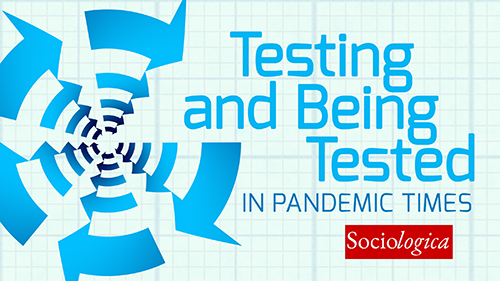 Two types of testing are proliferating during the coronavirus pandemic. The first type are medical tests to diagnose the virus as well as epidemiological models that project its course. In the second type, actors, organizations, and institutions are being tested in a moment of social and political crisis. This essay analyzes the similarities and differences between these two major types of tests in order to understand their entaglements in the crisis.
Two types of testing are proliferating during the coronavirus pandemic. The first type are medical tests to diagnose the virus as well as epidemiological models that project its course. In the second type, actors, organizations, and institutions are being tested in a moment of social and political crisis. This essay analyzes the similarities and differences between these two major types of tests in order to understand their entaglements in the crisis.Sociologica, Vol. 14, No.1 (2020), pp.67-94.
Put to the Test: For a New Sociology of Testing
 Tests have become such a familiar genre that today it seems almost anything can be a test situation. There are stress tests and screen tests, personality tests and citizenship tests, tests of strength and tests of faith. The challenge that a new sociology of testing must address is that ubiquitous testing changes the relations between science, engineering and sociology: It is not that the tests of 21st Century engineering occur within a social context but that it is the very fabric of the social that is being put to the test.
Tests have become such a familiar genre that today it seems almost anything can be a test situation. There are stress tests and screen tests, personality tests and citizenship tests, tests of strength and tests of faith. The challenge that a new sociology of testing must address is that ubiquitous testing changes the relations between science, engineering and sociology: It is not that the tests of 21st Century engineering occur within a social context but that it is the very fabric of the social that is being put to the test.The Performance Complex
 What happens when ever more activities in many domains of everyday life are evaluated and experienced in terms of performance metrics? The ratings and rankings of such systems do not have prices but are more like the prizes of competitions. Yet unlike organized competitions, they are ceaseless and without formal entry. Instead of producing resolutions, their scorings create addictions. In the networks of observation of the performance society all are performing and all keeping score. I refer to this assemblage of metrics, networks, and their attendant emotional pathologies as the performance complex.
What happens when ever more activities in many domains of everyday life are evaluated and experienced in terms of performance metrics? The ratings and rankings of such systems do not have prices but are more like the prizes of competitions. Yet unlike organized competitions, they are ceaseless and without formal entry. Instead of producing resolutions, their scorings create addictions. In the networks of observation of the performance society all are performing and all keeping score. I refer to this assemblage of metrics, networks, and their attendant emotional pathologies as the performance complex.The Performance Complex: Competitions and Valuations in Social Life
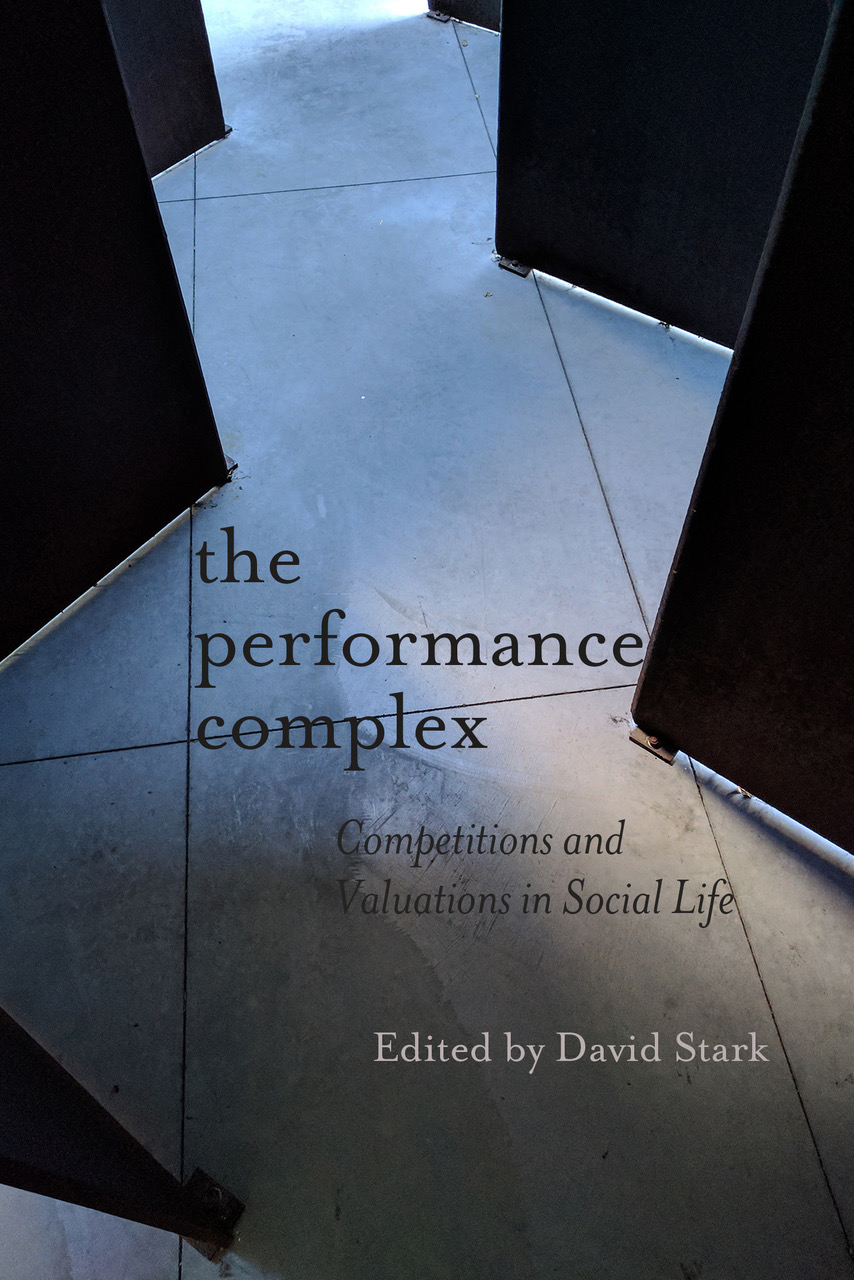 What’s a valuable performance? To understand the performance complex of competition and competitions, the chapters in this book study discrete contests (architectural competitions, international music competitions, and world press photo competitions); show how the continuous updating of rankings is both a device for navigating the social world and an engine of anxiety; and examine the production of such anxiety in settings ranging from the pedagogy of performance in business schools to struggling musicians coping with new performance metrics in online platforms.
What’s a valuable performance? To understand the performance complex of competition and competitions, the chapters in this book study discrete contests (architectural competitions, international music competitions, and world press photo competitions); show how the continuous updating of rankings is both a device for navigating the social world and an engine of anxiety; and examine the production of such anxiety in settings ranging from the pedagogy of performance in business schools to struggling musicians coping with new performance metrics in online platforms.Underground Testing: Name-Altering Practices as Probes in Electronic Music
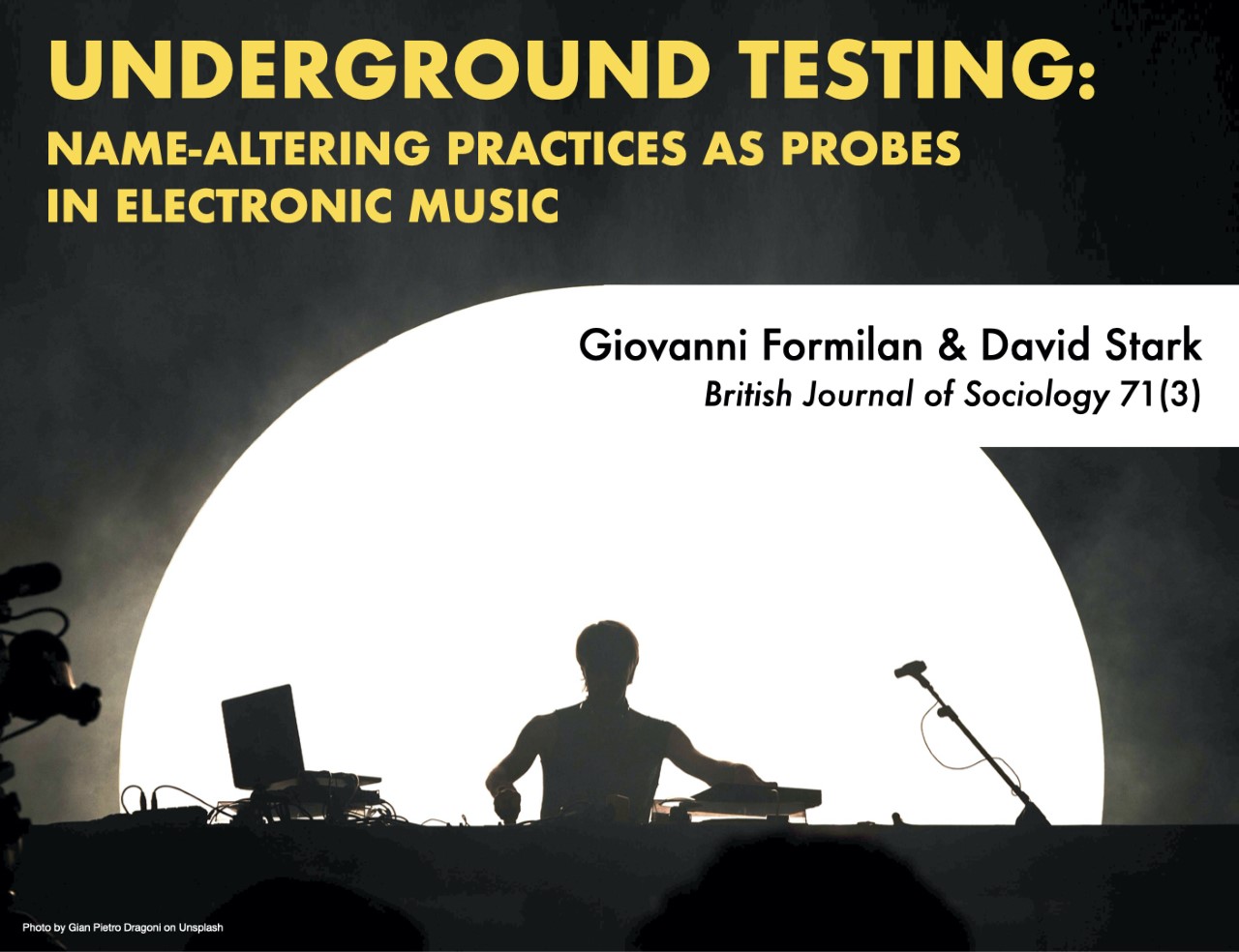 Electronic music artists use aliases as test devices to probe and validate artistic identity in the music scene. You’ve likely heard of pseudonymity and anonymity. Another name-altering practice is polyonymy – some electronic music artists have lots of names. Our study based on field work in Berlin.
Electronic music artists use aliases as test devices to probe and validate artistic identity in the music scene. You’ve likely heard of pseudonymity and anonymity. Another name-altering practice is polyonymy – some electronic music artists have lots of names. Our study based on field work in Berlin.Hybrid Orchestration in Multi-stakeholder Innovation Networks:
Practices of mobilizing multiple, diverse stakeholders across organizational boundaries
 The prominence of inter-organizational networks for innovation raises questions about how to support collaboration between multiple, diverse stakeholders. We focus on network orchestration and examine the practices that support orchestrators in dealing with the challenges brought by the number and diversity of stakeholders. Using qualitative, longitudinal data from an innovation network of 57 stakeholders, we identify three types of orchestration practices – connecting, facilitating and governing – and observe how they underlie innovation trajectories over time, each supporting the achievement of distinct network outcomes. Within and across trajectories, we observe how orchestrators rely on hybrid orchestration: they switch between dominating and consensus-based orchestration modes, in response to emergent network challenges. By switching between modes, orchestrators address the complexities of simultaneously and temporally dealing with a large number and diversity of stakeholders. With these findings, we present a toolbox of practices for network orchestrators to address distinct challenges in different types of networks and underscore that network research should consider the plurality of networks, rather than treat them as universalistic. Orchestrators play a key role in managing this plurality: they act as environmental scanners who address emergent network challenges through hybrid orchestration. This realization opens new avenues for network research, for example, relating to the skills and capabilities of orchestrators.
The prominence of inter-organizational networks for innovation raises questions about how to support collaboration between multiple, diverse stakeholders. We focus on network orchestration and examine the practices that support orchestrators in dealing with the challenges brought by the number and diversity of stakeholders. Using qualitative, longitudinal data from an innovation network of 57 stakeholders, we identify three types of orchestration practices – connecting, facilitating and governing – and observe how they underlie innovation trajectories over time, each supporting the achievement of distinct network outcomes. Within and across trajectories, we observe how orchestrators rely on hybrid orchestration: they switch between dominating and consensus-based orchestration modes, in response to emergent network challenges. By switching between modes, orchestrators address the complexities of simultaneously and temporally dealing with a large number and diversity of stakeholders. With these findings, we present a toolbox of practices for network orchestrators to address distinct challenges in different types of networks and underscore that network research should consider the plurality of networks, rather than treat them as universalistic. Orchestrators play a key role in managing this plurality: they act as environmental scanners who address emergent network challenges through hybrid orchestration. This realization opens new avenues for network research, for example, relating to the skills and capabilities of orchestrators.
Friends, Gifts, and Cliques: Social Proximity and Recognition in Peer-Based Tournament Rituals
 Two main accounts of the effect of social proximity between candidates competing for recognition and members of the evaluating audience can be extrapolated from extant literature on peer-based tournament rituals and cultural fields. Following a Bourdieusian tradition, one account—which we label “self-reproduction”—points to the catalyzing effect of social proximity in shaping recognition along relational lines. Drawing from recent scholarship on social evaluation, a second account—which we call “intellectual distance”—suggests that social proximity deters recognition. We probe the influence of different articulations of social proximity (i.e., direct ties, cliquishness, and reciprocity) on recognition by studying awarding decisions within the context of the Norwegian advertising industry. Interviews with key informants as well as econometric results suggest that, while self-reproduction tends to prevail over intellectual distance, these effects coexist and their relative influence varies across levels of recognition. We gauge the relative saliency of the two accounts by using a mixed methods approach. Important implications for research on social evaluation and recognition in peer-based tournament rituals are drawn.
Two main accounts of the effect of social proximity between candidates competing for recognition and members of the evaluating audience can be extrapolated from extant literature on peer-based tournament rituals and cultural fields. Following a Bourdieusian tradition, one account—which we label “self-reproduction”—points to the catalyzing effect of social proximity in shaping recognition along relational lines. Drawing from recent scholarship on social evaluation, a second account—which we call “intellectual distance”—suggests that social proximity deters recognition. We probe the influence of different articulations of social proximity (i.e., direct ties, cliquishness, and reciprocity) on recognition by studying awarding decisions within the context of the Norwegian advertising industry. Interviews with key informants as well as econometric results suggest that, while self-reproduction tends to prevail over intellectual distance, these effects coexist and their relative influence varies across levels of recognition. We gauge the relative saliency of the two accounts by using a mixed methods approach. Important implications for research on social evaluation and recognition in peer-based tournament rituals are drawn.What’s Observed in a Rating? Rankings as Orientation in the Face of Uncertainty
 Elena Esposito and I agree with the criticisms of ratings and rankings as simplistic, obscurantist, inaccurate, and subjective. But why are they becoming such an increasingly influential social form. We argue tha they function well enough not because they mirror how things are but because they offer a highly visible reference point to which others are attentive and thereby provide an orientation to navigate uncertainty. The concluding section places the problem of ratings and rankings in a broader historical perspective contrasting the ranked society to the society of rankings. Responding to uncertainty, ratings and rankings perpetuate rather than eliminate anxiety.
Elena Esposito and I agree with the criticisms of ratings and rankings as simplistic, obscurantist, inaccurate, and subjective. But why are they becoming such an increasingly influential social form. We argue tha they function well enough not because they mirror how things are but because they offer a highly visible reference point to which others are attentive and thereby provide an orientation to navigate uncertainty. The concluding section places the problem of ratings and rankings in a broader historical perspective contrasting the ranked society to the society of rankings. Responding to uncertainty, ratings and rankings perpetuate rather than eliminate anxiety.Social Sequence Analysis and the Study of Creative Trajectories
 In this essay, we present and illustrate a few applications of social sequence analysis (SSA) to the study of creativity. Focusing on complete sequences of events rather than on localized situations, SSA enables the analytical treatment of creativity as a process that unfolds over time, offering a fuller representation of temporal dynamics of creativity than is typically possible with other methods such as event history analysis, repeated measures, or panel design methods. We suggest that SSA holds great promise for research on creative industries, as it is particularly well suited to detect similarities among diverse creative trajectories while at the same time preserving their singularities. To substantiate our suggestions we employ data from the underground electronic music to examine trajectories of stylistic variation and illustrate how to implement sequence methods to augment and/or complement other research designs. Our purpose is to stimulate interest in SSA and encourage its application to the study of creativity at the individual, organizational and industry level.
In this essay, we present and illustrate a few applications of social sequence analysis (SSA) to the study of creativity. Focusing on complete sequences of events rather than on localized situations, SSA enables the analytical treatment of creativity as a process that unfolds over time, offering a fuller representation of temporal dynamics of creativity than is typically possible with other methods such as event history analysis, repeated measures, or panel design methods. We suggest that SSA holds great promise for research on creative industries, as it is particularly well suited to detect similarities among diverse creative trajectories while at the same time preserving their singularities. To substantiate our suggestions we employ data from the underground electronic music to examine trajectories of stylistic variation and illustrate how to implement sequence methods to augment and/or complement other research designs. Our purpose is to stimulate interest in SSA and encourage its application to the study of creativity at the individual, organizational and industry level.For What It’s Worth
 This essay takes its point of departure from the intellectual milieu in the mid 1980s that gave rise to Luc Boltanski and Laurent Thévenot’s book, On Justification: Economies of Worth. It shows how exposure to ideas and concepts in that book came to take varied forms as they were elaborated and modified in my work across several decades of research in diverse empirical settings. The essay appears in a volume on Economies of Worth and French Pragmatist Sociology edited by Charlotte Cloutier, Jean-Pascal Gond, and Bernard Leca.
This essay takes its point of departure from the intellectual milieu in the mid 1980s that gave rise to Luc Boltanski and Laurent Thévenot’s book, On Justification: Economies of Worth. It shows how exposure to ideas and concepts in that book came to take varied forms as they were elaborated and modified in my work across several decades of research in diverse empirical settings. The essay appears in a volume on Economies of Worth and French Pragmatist Sociology edited by Charlotte Cloutier, Jean-Pascal Gond, and Bernard Leca.Stark, David. 2017 “For What It’s Worth.” In Research in the Sociology of Organizations. Volume 52 , pp. 383-397.
To Grasp Cognition in Action
 With behavioral experiments and protocol analysis, researchers can capture cognition in action. Using behavioral experiments, they can study realized behavior, not perception or self-reports. With protocol analysis, a method to elicit decision-makers’ thoughts, researchers can tap into cognitive processes. In combination, the two methods offer a novel approach to grasp mental processes alongside behavior, to reach causality and replicate findings. We describe the methods, demonstrate how researchers can apply them, and share practices from the design of experimental instruments to the replication of findings.
With behavioral experiments and protocol analysis, researchers can capture cognition in action. Using behavioral experiments, they can study realized behavior, not perception or self-reports. With protocol analysis, a method to elicit decision-makers’ thoughts, researchers can tap into cognitive processes. In combination, the two methods offer a novel approach to grasp mental processes alongside behavior, to reach causality and replicate findings. We describe the methods, demonstrate how researchers can apply them, and share practices from the design of experimental instruments to the replication of findings.Reypens C., & Levine S. S. 2017. “To grasp cognition in action, combine behavioral experiments with protocol analysis.” In KJ Sund, GP Hodgkinson, RJ Galavan (Eds.), Methodological challenges and advances in managerial and organizational cognition: 123-146. Emerald.
Strategic Intelligence: The Cognitive Capability to Anticipate Competitor Behavior
 Why do some entrepreneurs outperform others? How can companies succeed against tough competition? Certainly, some benefit from unique resources, such as patents, and others can winnow competition, as through mergers. But some have entered highly competitive markets, lacking obvious resources, yet managed to achieve impressive success: think Under Armour, Wal-Mart or Home Depot. Here we test how advantage can stem from managerial cognition. We measure two kinds of cognitive skill in market participants, and then let them vie for cash in intensely competitive markets. Some end up with far more profit than others. Tracing the root of high performance, we find it is predicted by a combination of analytic skills, the ability to solve abstract problems, and strategic intelligence-ability to anticipate competitors’ behavior and preempt it.
Why do some entrepreneurs outperform others? How can companies succeed against tough competition? Certainly, some benefit from unique resources, such as patents, and others can winnow competition, as through mergers. But some have entered highly competitive markets, lacking obvious resources, yet managed to achieve impressive success: think Under Armour, Wal-Mart or Home Depot. Here we test how advantage can stem from managerial cognition. We measure two kinds of cognitive skill in market participants, and then let them vie for cash in intensely competitive markets. Some end up with far more profit than others. Tracing the root of high performance, we find it is predicted by a combination of analytic skills, the ability to solve abstract problems, and strategic intelligence-ability to anticipate competitors’ behavior and preempt it.Levine, S. S., Bernard, M. and Nagel, R. (2017), Strategic Intelligence: The Cognitive Capability to Anticipate Competitor Behavior. Strategic Management Journal doi:10.1002/smj.2660
The Critique of Empirical Social Science: New Policies at Management and Organization Review
 At the June 2016 meeting of the International Association for Chinese Management Research, MOR organized asymposium to discuss the mounting criticisms of empirical social science and subsequent changes, as part of ongoing discussions affecting journal reviewing policies. This article overviews the history of modern empirical social science as the foundation of management, organization, and strategy research and the criticism of social science research, which has reached the point that some critics refer to current publication norms as encouraging and enabling the publication of junk science. Most importantly, however, this article outlines MOR’s strategy going forward and the new reviewing initiatives that MOR is implementing as of Volume 13 (2017).
At the June 2016 meeting of the International Association for Chinese Management Research, MOR organized asymposium to discuss the mounting criticisms of empirical social science and subsequent changes, as part of ongoing discussions affecting journal reviewing policies. This article overviews the history of modern empirical social science as the foundation of management, organization, and strategy research and the criticism of social science research, which has reached the point that some critics refer to current publication norms as encouraging and enabling the publication of junk science. Most importantly, however, this article outlines MOR’s strategy going forward and the new reviewing initiatives that MOR is implementing as of Volume 13 (2017).Lewin, Arie Y., Chi-Yue Chiu, Carl F. Fey, Sheen S. Levine, Gerald McDermott, Johan Peter Murmann, and Eric Tsang. 2016. “The Critique of Empirical Social Science: New Policies at Management and Organization Review.” Management and Organization Review 12 (4). Cambridge University Press: 649–58. doi:10.1017/mor.2016.43.
Behavior in behavioral strategy: Capturing, measuring, analyzing
 Measuring behavior requires techniques that can capture observed outcomes and expose underlying processes and mechanisms. In this chapter, we present a toolbox of methods: We designed experimental tasks to simulate decision environments and capture behavior. We deployed protocol analysis and text analysis to examine the underlying cognitive processes. We apply these methods to collect rich behavioral data on two key topics in strategic management: the exploration–exploitation trade-off and strategic risk-taking. This mix of methods is particularly useful to in describing actual behavior as it is, not as it should be, replacing assumptions with data and offering a finer-grained perspective of strategic decision-making.
Measuring behavior requires techniques that can capture observed outcomes and expose underlying processes and mechanisms. In this chapter, we present a toolbox of methods: We designed experimental tasks to simulate decision environments and capture behavior. We deployed protocol analysis and text analysis to examine the underlying cognitive processes. We apply these methods to collect rich behavioral data on two key topics in strategic management: the exploration–exploitation trade-off and strategic risk-taking. This mix of methods is particularly useful to in describing actual behavior as it is, not as it should be, replacing assumptions with data and offering a finer-grained perspective of strategic decision-making.The Möbius Organizational Form: Make, Buy, Cooperate, or Co-opt?
 This paper examines the emerging contours of a new organizational form, in which firms move beyond the cooperative pacts of alliances to a radicalized, aggressive co-optation of external assets. Taking our point of departure from the literature on the “networked” firm, we point to an alternative to the make, buy, or cooperate decision: in the Möbius form, firms co-opt resources, unsecured by any alliances, formal or informal. Some companies are brazen in their co-optation, leveraging external assets so thoroughly that they might well be considered a core part of the firm. Enabled by developments in computing technologies, such co-optation challenges traditional models of organizational identity. These fluid boundaries recall the Möbius topological model, which we take as the metaphor for this nascent organizational form. We chart this new behavior by discussing a range of firm activities, including the functions of marketing, research and development, and managerial decision-making, as they are replaced with assets co-opted from other firms in the private sector, government agencies, and lastly the firm’s own users.
This paper examines the emerging contours of a new organizational form, in which firms move beyond the cooperative pacts of alliances to a radicalized, aggressive co-optation of external assets. Taking our point of departure from the literature on the “networked” firm, we point to an alternative to the make, buy, or cooperate decision: in the Möbius form, firms co-opt resources, unsecured by any alliances, formal or informal. Some companies are brazen in their co-optation, leveraging external assets so thoroughly that they might well be considered a core part of the firm. Enabled by developments in computing technologies, such co-optation challenges traditional models of organizational identity. These fluid boundaries recall the Möbius topological model, which we take as the metaphor for this nascent organizational form. We chart this new behavior by discussing a range of firm activities, including the functions of marketing, research and development, and managerial decision-making, as they are replaced with assets co-opted from other firms in the private sector, government agencies, and lastly the firm’s own users.Watkins E. A., & Stark D. “The Möbius Organizational Form: Make, Buy, Cooperate, or Co-opt?” Sociologica vol 12, no 1 (2018), pp. 65-80.
Deconstructing the Outsider Puzzle: The Legitimation Journey of Novelty
 The proposition that outsiders often are crucial carriers of novelty into an estab- lished institutional field has received wide empirical support. But an equally compelling proposition points to the following puzzle: the very same conditions that enhance out- siders’ ability to make novel contributions also hinder their ability to carry them out. We seek to address this puzzle by examining the contextual circumstances that affect the legiti- mation of novelty originating from a noncertified outsider that challenged the status quo in an established institutional field. Our research case material is John Harrison’s introduction of a new mechanical method for measuring longitude at sea—the marine chronometer— which challenged the dominant astronomical approach. We find that whether an outsider’s new offer gains or is denied legitimacy is influenced by (1) the outsider’s agency to further a new offer, (2) the existence of multiple audiences with different dispositions toward this offer, and (3) the occurrence of an exogenous jolt that helps create a more receptive social space. We organize these insights into a multilevel conceptual framework that builds on previous work but attributes a more decisive role to the interplay between endogenous and exogenous variables in shaping a field’s shifting receptiveness to novelty. The framework exposes the interdependencies between the micro-, meso-, and macro-level processes that jointly affect an outsider’s efforts to introduce novelty into an existing field.
The proposition that outsiders often are crucial carriers of novelty into an estab- lished institutional field has received wide empirical support. But an equally compelling proposition points to the following puzzle: the very same conditions that enhance out- siders’ ability to make novel contributions also hinder their ability to carry them out. We seek to address this puzzle by examining the contextual circumstances that affect the legiti- mation of novelty originating from a noncertified outsider that challenged the status quo in an established institutional field. Our research case material is John Harrison’s introduction of a new mechanical method for measuring longitude at sea—the marine chronometer— which challenged the dominant astronomical approach. We find that whether an outsider’s new offer gains or is denied legitimacy is influenced by (1) the outsider’s agency to further a new offer, (2) the existence of multiple audiences with different dispositions toward this offer, and (3) the occurrence of an exogenous jolt that helps create a more receptive social space. We organize these insights into a multilevel conceptual framework that builds on previous work but attributes a more decisive role to the interplay between endogenous and exogenous variables in shaping a field’s shifting receptiveness to novelty. The framework exposes the interdependencies between the micro-, meso-, and macro-level processes that jointly affect an outsider’s efforts to introduce novelty into an existing field.Cattani, G., Ferriani, S., Lanza, A. (2017). “Deconstructing the Outsider Puzzle: The Legitimation Journey of Novelty, Organization Science, Volume 28 Issue 6, November-December 2017, pp. 965-992·
The Social Structure of Consecration in Cultural Fields
 Building on sociological research that examines the allocation of rewards in peer evaluations, we argue that the recognition of cultural producers’ work varies with their status and social distance from the audience mem- bers who evaluate them. We study the influence of these two mechanisms within the context of the Norwegian advertising industry. Specifically, we looked at how cultural producers’ status and social distance from jury members affect their chances of being honored in “The Silver Tag” – one of the main digital advertising award contests in Norway – during the period 2003–2010. While our findings provide support for status-based rewards allocation, the positive effects of status may be more circumscribed than previously thought. When accounting for the existence of previous con- nections between audience members and cultural producers, we find that cultural producers are more or less likely to receive an accolade depending on their degree of separation from the audience members. By exposing network-based determinants of consecrating decisions, and suggesting that the positive effects of status may be more circumscribed than previ- ously thought, our findings shed important light on the social foundations of evaluation and, more broadly, the mechanisms of reward allocation in cultural fields.
Building on sociological research that examines the allocation of rewards in peer evaluations, we argue that the recognition of cultural producers’ work varies with their status and social distance from the audience mem- bers who evaluate them. We study the influence of these two mechanisms within the context of the Norwegian advertising industry. Specifically, we looked at how cultural producers’ status and social distance from jury members affect their chances of being honored in “The Silver Tag” – one of the main digital advertising award contests in Norway – during the period 2003–2010. While our findings provide support for status-based rewards allocation, the positive effects of status may be more circumscribed than previously thought. When accounting for the existence of previous con- nections between audience members and cultural producers, we find that cultural producers are more or less likely to receive an accolade depending on their degree of separation from the audience members. By exposing network-based determinants of consecrating decisions, and suggesting that the positive effects of status may be more circumscribed than previ- ously thought, our findings shed important light on the social foundations of evaluation and, more broadly, the mechanisms of reward allocation in cultural fields.Aadland, E., Cattani, G., S. Ferriani (2018) “The Social Structure of Consecration in Cultural Fields: The Influence of Status and Social Distance in Audience-Candidate Evaluative Processes”, In C. Jones M. Maoret (eds.), Frontiers of Creative Industries: Exploring Structural and Categorical Dynamics. Research in the Sociology of Organizations, 2018, 55: 129–157.